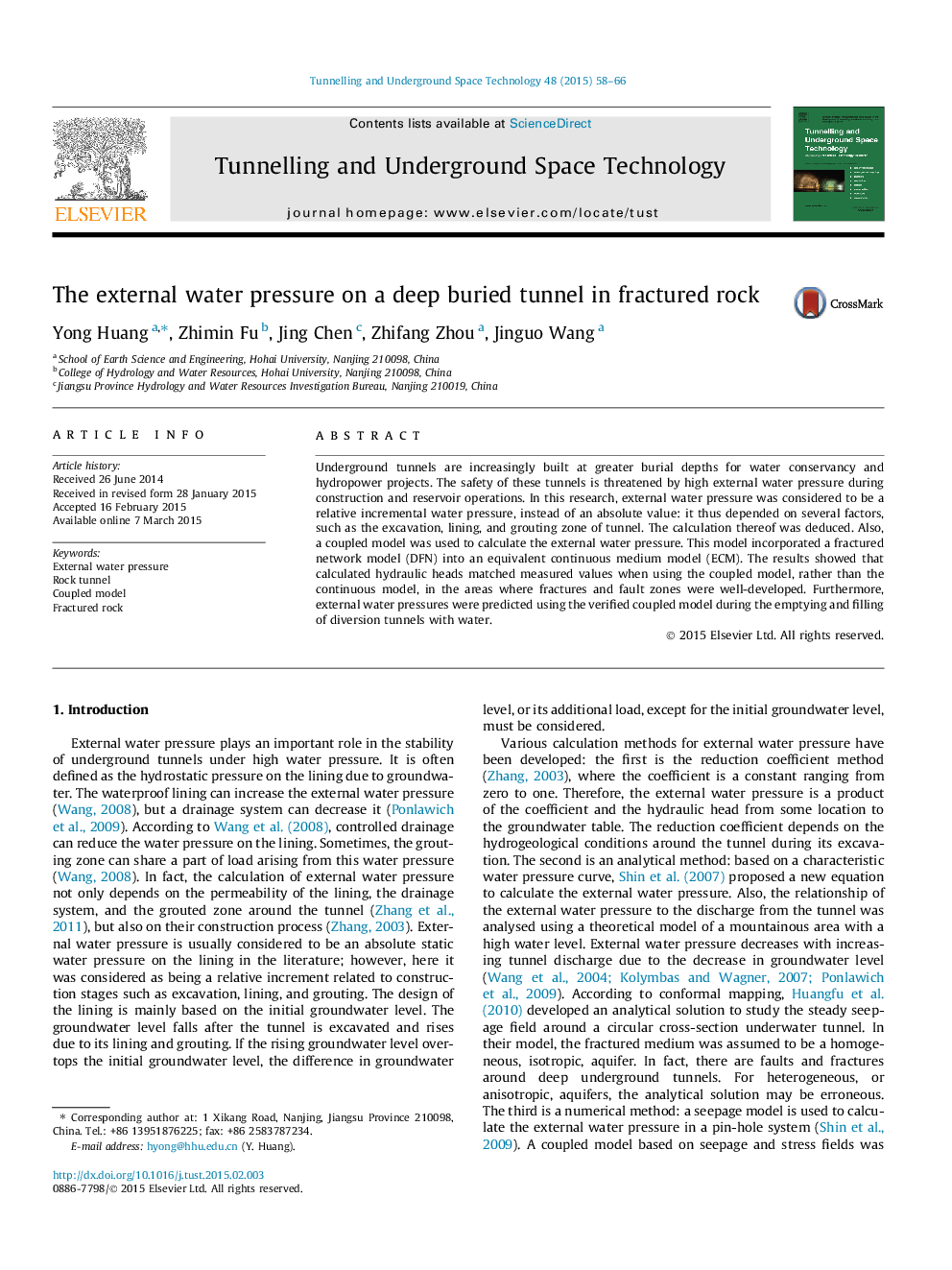| کد مقاله | کد نشریه | سال انتشار | مقاله انگلیسی | نسخه تمام متن |
|---|---|---|---|---|
| 311764 | 534136 | 2015 | 9 صفحه PDF | دانلود رایگان |
• The external water pressure is considered to be relative increment of water pressure.
• The calculation method of the external water pressure is deduced.
• The external water pressure is calculated using a coupled model.
• The coupled model has an advantage over continuous model in the area where fractures and fault zones develop well.
Underground tunnels are increasingly built at greater burial depths for water conservancy and hydropower projects. The safety of these tunnels is threatened by high external water pressure during construction and reservoir operations. In this research, external water pressure was considered to be a relative incremental water pressure, instead of an absolute value: it thus depended on several factors, such as the excavation, lining, and grouting zone of tunnel. The calculation thereof was deduced. Also, a coupled model was used to calculate the external water pressure. This model incorporated a fractured network model (DFN) into an equivalent continuous medium model (ECM). The results showed that calculated hydraulic heads matched measured values when using the coupled model, rather than the continuous model, in the areas where fractures and fault zones were well-developed. Furthermore, external water pressures were predicted using the verified coupled model during the emptying and filling of diversion tunnels with water.
Before the borehole for each high-water pressure test (HWPT) was drilled, the initial groundwater level in the borehole was H0. After the borehole was finished, the groundwater level was set to H1. When an HWPT was finished, these test boreholes were sealed, which results in the gradual rise in groundwater level owing to precipitation and the use of water-filled testing. The groundwater level after sealing is assumed to be H2. According to the values of H0, H1 and H2, the relative increment of the water pressure in the rock can be determined, which can explain why the rock mass around the diversion tunnels was not fractured during these water-filled. The hydrostatic pressure in the diversion tunnels may have exceeded the water pressure inducing hydraulic fracturing, but the difference was less than the increased groundwater level after the boreholes were sealed.Figure optionsDownload as PowerPoint slide
Journal: Tunnelling and Underground Space Technology - Volume 48, April 2015, Pages 58–66
